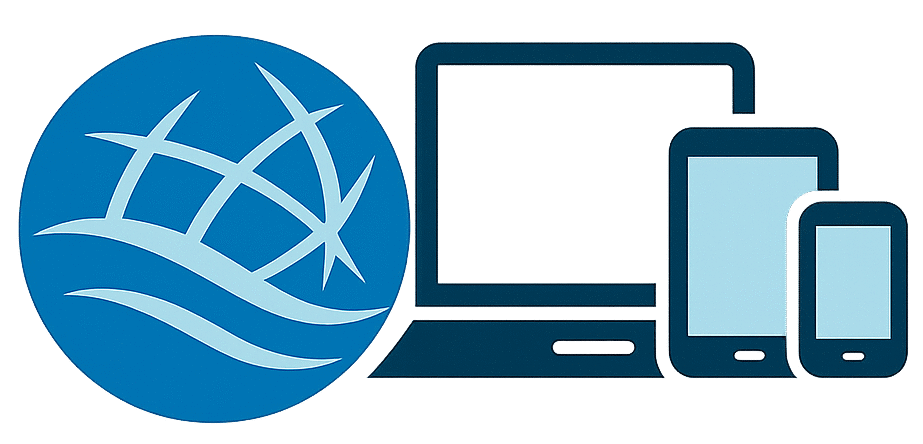If you’re just getting started with digital marketing, it’s easy to feel bogged down by all the jargon, tools, and endless advice out there. I’ve been there myself, scrolling through guides full of buzzwords and ultra-complicated strategies. Truth is, digital marketing doesn’t have to be confusing or out of reach. With the right approach, anyone can build a solid foundation, even if you’re a total beginner. I’m going to show you how I’d put together a simple digital marketing strategy from scratch, covering the most useful basics that’ll get you up and running.

Understanding Digital Marketing Strategy Basics
Digital marketing is really about reaching your audience online through channels like websites, social media, email, and search engines. Businesses use digital marketing to get their message out, build trust, and encourage people to take action, like buying something or signing up for a newsletter.
No matter what size your business or project is, starting with a clear strategy will help you avoid wasted time and effort. The digital landscape changes constantly, but the core building blocks remain the same. Knowing these basics helps you track your growth and make better decisions as you go.
Digital marketing as a field has exploded in the last decade. According to Statista, digital advertising spend worldwide reached over $600 billion in 2023, showing just how much businesses rely on these strategies. While it might seem overwhelming, newbies can jump in and make real progress with a little bit of structure and the right steps.
Step By Step: Building Your Digital Marketing Strategy
I like to start with a few clear steps before jumping into tactics. These steps give you direction and help you stay organized along the way. Here’s a basic outline you might find useful:
- Clarify Your Goals: Think about what you actually want, such as more sales, website traffic, or stronger brand awareness. Setting goals gives you something to measure.
- Understand Your Audience: Figure out who you’re targeting. What problems are you solving? What are their online habits?
- Pick the Right Channels: Instead of trying to be everywhere, start with the places your audience visits most, like Instagram, Facebook, or Google Search.
- Create Compelling Content: Share valuable info, tips, and stories tailored to your audience. Content comes in lots of forms: blog posts, videos, and even memes.
- Measure and Adjust: Use tools like Google Analytics or platform insights to see what’s working, and tweak your plan as you go.
Breaking things down this way keeps you focused and helps you avoid common newbie mistakes, like trying everything at once or ignoring your data. You’ll make the most of your time and effort by sticking to a basic plan and consistently tweaking as you learn.
First Things to Figure Out Before You Begin
Digital marketing isn’t only about posting on social media or setting up ads. Here are a few things that really help you get off to a smoother start:
- Get Your Website Ready: Even a simple one-page website is helpful. Make sure it’s mobile friendly and loads quickly. Tools like Wix, Squarespace, or WordPress are beginner friendly options.
- Wealthy Affiliate is an all in one platform that offers training, tools and a website. There are membership levels that open up more platform resources. Check out this Wealthy Affiliate Review here!
- Set Up Basic Tracking: Google Analytics is free and shows you who’s visiting your site and what they’re doing. It’s worth connecting early so you have data from day one.
- Branding Elements: Simple things like a logo, color scheme, and consistent tone make you look more professional and build trust with your potential audience.
Focusing on these things up front saves you headaches later and lays a good foundation for everything that follows. A solid starting point sets you up for easier growth and more effective campaigns.
Common Challenges for Digital Marketing Newbies
Plenty of people hit a wall when they’re just starting out. I’ve had the same struggles, so here’s what I look out for and some fixes that usually work:
- Overwhelm from Tools and Platforms: There are so many apps and channels that it’s easy to get lost. I pick one or two (like Instagram or a basic blog) and stick to those until I feel comfortable.
- Unclear Messaging: If you don’t know what you’re trying to say or sell, your audience won’t either. Writing out your “elevator pitch” can help sharpen your focus.
- Struggling with Consistency: Regular posting builds momentum, but it’s tough to keep up at first. I batch content in advance (like writing several posts in one sitting) to keep things moving.
- Not Seeing Quick Results: Digital marketing is more of a marathon than a sprint. I track progress monthly and celebrate small wins along the way.
Overwhelm from Too Many Tools
I remember testing out three different email services at once; big mistake! It’s much easier to stick with one tool for each job. Free versions of MailerLite, ConvertKit known as Kit now, Aweber, Mailchimp or Bevo will do just fine in the beginning.
Unclear Messaging
If your value isn’t obvious in a sentence or two, spend a bit of time clarifying it. One trick is to ask a friend to describe your business. Their outside perspective can be surprisingly helpful.
Staying Consistent
Treat content like meal prep: do it in batches, schedule it if you can, and give yourself breaks. Weekly, consistent effort often works better than bursts of random activity. If you keep things steady, your audience knows what to expect and you’re less likely to burn out.
Patience With Growth
It’s totally normal if you don’t see much traffic or engagement at first. I remind myself that every big account started with zero followers. Keeping realistic expectations makes a huge difference. When you celebrate even small growth, it becomes easier to stick with it in the long run.
All these roadblocks are totally normal for beginners. If anything, they’re just checkpoints on your digital marketing adventure.
Practical Tips and Tricks For Getting Ahead
Once you’re rolling with the basics, some small tweaks can help you make even more progress. Here are a few things that I’ve found really valuable:
Repurpose Content: Turn a long blog post into multiple Instagram tips, or slice a video into short clips for stories. This helps get more from each piece of content and saves a lot of time.
Use Templates: Canva and similar platforms have readymade graphics for nearly everything. Using templates keeps your designs on brand with minimal design skills required.
Automate Repetitive Tasks: Scheduling tools like Buffer and Hootsuite automatically post your content, freeing up your time for more important things.
Test and Learn: Try different headlines, post times, or topics, but only one change at a time so you know what caused a change in results. Adjusting little by little helps improve results over time.
Stay Curious: Take time weekly to check out blog posts, videos, or podcasts from digital marketing experts. Not only does this spark new ideas, but you’ll also spot trends before they become mainstream.
Connect with Others: Join online communities or forums related to your field. You can ask questions, get feedback, and cheer others on. It’s much easier to stay motivated when you’re part of a group with similar goals.
What Should Beginners Focus on First?
There are a few key areas that I always come back to, especially when starting from scratch:
- Content Creation: No matter the platform, content is what draws people in. Focus on sharing stuff that solves real problems, answers questions, or entertains your ideal audience.
- SEO (Search Engine Optimization): A few simple actions, like including keywords naturally and using descriptive meta titles, make your site easier to find on Google.
- Email Marketing: Email lists remain valuable, no matter how things change online. Simple signup forms and monthly newsletters work well for nurture marketing.
- Social Media Presence: It’s not about being everywhere, but showing up where your people hang out. Pick one platform, master it, then consider adding others as you grow.
For example, a food blogger might focus on Instagram for sharing photo based recipes, while a tech reviewer could do better through YouTube and email tips. Tailor your main efforts to your strengths and where your audience spends the most time.
Frequently Asked Questions
If you’re new, you might have questions about what to do next. Here are a few I get pretty often:
Question: Do I need to pay for ads to see results?
Answer: Not at all. Plenty of brands grow just through organic content and SEO. Paid ads can give a boost to your reach, but it’s definitely possible to get started without spending money right away.
Question: What’s the easiest platform for a beginner?
Answer: There’s no universal answer; it really depends on your audience. Instagram is user friendly and popular for visual brands, while LinkedIn is better for B2B. I recommend picking the channel where you feel comfortable and where your target people already hang out.
Question: How often should I post new content?
Answer: Focus on consistency instead of frequency. If once a week is realistic, start there. It’s better to be steady than to burn out from over posting.
Takeaways
Starting a digital marketing adventure can feel like a big jump, but sticking to the basics really goes a long way. Keep your strategy simple, focus on the platforms that matter to your audience, and learn as you go. There’s no one perfect way to succeed, but the most consistent effort wins over time. Every marketer, no matter how experienced, got their start by taking that first step. So go ahead, put your plan into action and see where it leads. Good luck as you grow your digital marketing skills!
